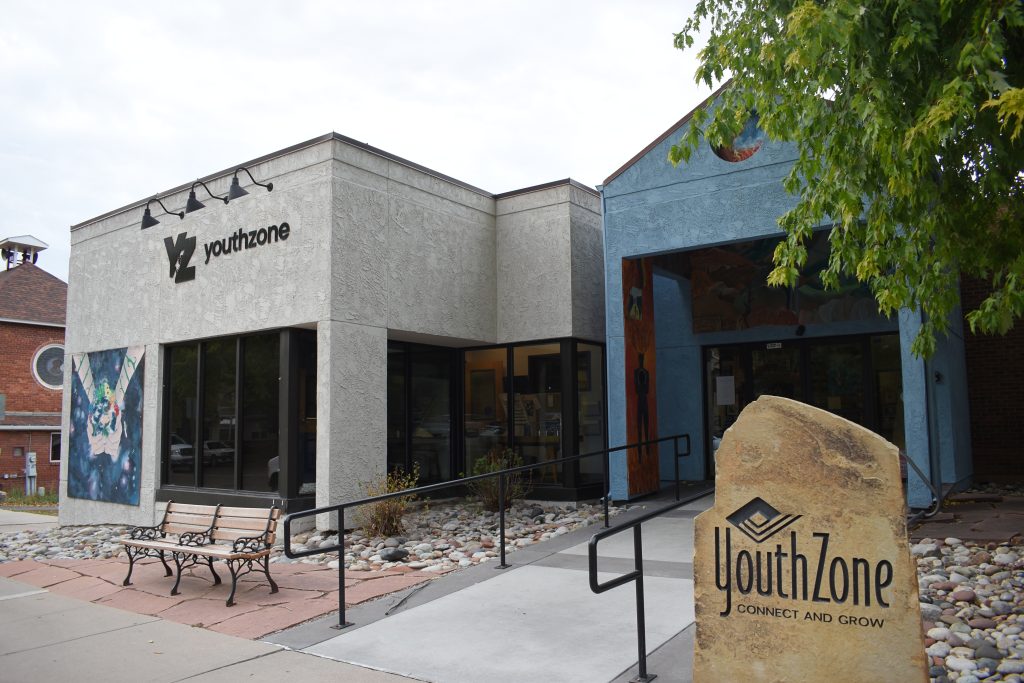Good News and Bad News for Roaring Fork Valley Youth
by Cassandra Ballard published in the Post Independent on October 3, 2023
Read the Article on the Post Independent website HERE.

Dek: YouthZone sees higher risks factors, but funding and resources are helping fill the need
Youth risk factors are increasing, but so is community support, officials say.
“The number of clients that we serve is not necessarily growing or decreasing, but the risk level certainly is so we’re seeing more and more kids that are at risk,” said YouthZone Data and Development Specialist, Ali Naaseh-Shahry at a recent Glenwood Springs City Council meeting.
Layered trauma and complex substance use are two of the high risk factors listed by YouthZone Executive Director, Jami Hayes, which she described as needing multiple interventions per young person to have long-term success. The COVID-19 Pandemic also created new layers of trauma for young people.
“It was primarily lower-risk clients that we would see, and as the years go on, they’re becoming higher and higher-risk by the time they get to us,” Naaseh-Shahry said.
Additional risk factors for youth can include trouble coping with stress, doing poorly in school, poverty and peer rejection along with the availability of substances and community attitude toward those substances.
“We have so many support systems in our valley, and when we have a kiddo that walks in the door, or that comes through court with very complex and layered needs in the city of Glenwood specifically, we have about 10 partners that we work with,” Hayes said. “If we can’t do it, or if we’re too full, or we need to layer services, we have so many people who we can call to get that support.”
Hayes said that the community has so many private clinicians and contractors that have come forward that YouthZone has been able to create “little highways” of resources.
“So if we can’t figure it out, we figure it out, and Glenwood is very robust in its services,” Hayes said. “We are seeing many of our community partners really stepping into this intense substance work with us.
A year ago, substance was the issue Hayes said they needed more support for, but a lot more funding has made it easier to hire staff.
“We have literally doubled staff to provide the services we need, and we were able to train three to five staff members for substance services,” Hayes said. “We’re just seeing funding streams open up because our state partners care.”
Colorado Attorney General Phil Weiser cares a lot, and comes to Glenwood Springs and meets with YouthZone often, Hayes said.
“I’d say it’s feeling pretty good right now, even though the need is high and it’s super intense,” Hayes said. “Know that behind the scenes, partners are collaborating intensely to make sure that we get kids and families what they need.
YouthZone serves young people ages 12 to 18, with their main office in Glenwood Springs. Their service area stretches from Parachute to Aspen with satellite offices in Parachute, Carbondale, Basalt and Aspen.
“Primarily, we’re trying to create hopeful youth, strong families and safe communities,” Naaseh-Shahry said.
YouthZone offers youth and family assessments, youth advocacy for case management, counseling, substance use counseling and education, restorative justice, victim/offender mediation, teen groups, useful public service, deferred sentencing programs through courts, diversion, life skills classes, youth coaching and the Colorado Youth Detention Continuum screening in the 9th District.
“We’re also providing some parental support as well,” Naaseh-Shahry said. “We’re working on building that program so that we can serve the youth with families alongside them.”
Fees for services are $150, but YouthZone provides about $2,000 worth of services per client, Naaseh-Shahry said.
“Last year, we provided 488 assessments to 397 unique youth, that’s all the way from Parachute to Aspen,” he said. “We also served about 1,500 community members. So, those are people adjacent to the clients but maybe not necessarily receiving services directly from us.”
By the numbers in Glenwood Springs according to YouthZone:
- 68 unique clients
- 70% male, 30% female
- 53% Caucasian, 41% Latino, 3% African American, 2% Multiracial, 2% Native American
- 69% court referrals, 19% school and law enforcement referrals, 13% other
- Possession of marijuana, assault/battery, criminal trespass and counseling remain most common reasons for referral
- 98% non-reoffense rate and 85% successful completion rate
- 24% reported improvement in at least one survey area
The male and female clients are more skewed than other communities, but the demographic information is expected and what is seen in the community, Naaseh-Shahry said
“The majority of the clients that we serve in Glenwood Springs are coming from the courts,” Naaseh-Shahry said.
YouthZone sees 20% of clients from school and law enforcement. Oftentimes clients are facing a cannabis possession charge when they’re referred to YouthZone, but the organization is working to connect with at-risk youth before they’re in the courts.
“We’d like to try and catch them before they’re in court in the first place,”Naaseh-Shahry said. “So we’ve been working on building relationships with our partners in schools and law enforcement agencies to try and capture them upstream.”
Young people and parents identifying that they need help are 13% of the people YouthZone serves.
“They’re coming and reaching out to us so that we can provide services to them and that’s a pretty high number here in Glenwood which is really cool,” Naaseh-Shahry said.
